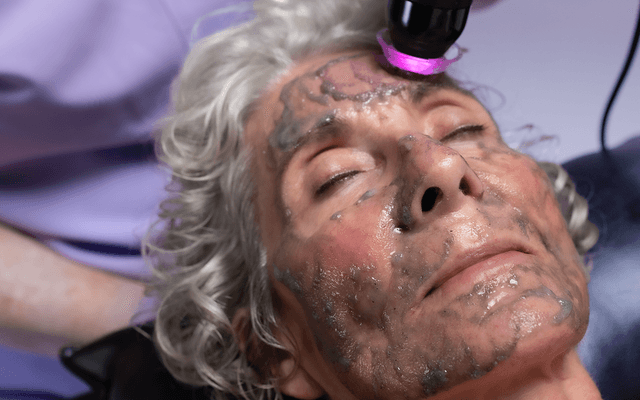Acne is often framed as a teenage concern, yet data tells a different story. According to the American Academy of Dermatology, more than 50% of women in their 20s and 25% of women in their 40s continue to experience acne (Yale Medicine). In the treatment room, this rise in adult-onset acne calls for a shift in strategy — moving away from aggressive correction and toward a more holistic, skin-supportive philosophy.
Understanding Women’s Acne
Hormonal Patterns
Women’s acne is strongly influenced by hormonal changes tied to the menstrual cycle, pregnancy, postpartum periods, perimenopause, and menopause. These fluctuations can stimulate sebum production, increase inflammation, and slow cellular turnover — contributing to congestion along the chin, jawline, and lower face.
Up to 26 percent of menopausal women experience new or recurring acne as estrogen declines and androgen activity becomes more prominent (Yale Medicine).
Stress and Environmental Triggers
Lifestyle stressors remain a leading driver of breakouts. Elevated cortisol increases sebum output and prolongs visible redness. In fact, psychological stress has been shown to increase sebum production by up to 80% through cortisol signaling (Acta Dermato-Venereologica study). Poor sleep, irregular routines, air pollution, and diet choices all contribute to ongoing inflammation and microbiome imbalance.
When the skin’s ecosystem is disrupted — often from over-cleansing, over-exfoliating, or using incompatible products — breakouts become more persistent and harder to manage.
A Holistic Framework for Acne Management
A whole-skin approach acknowledges that acne is influenced by barrier health, microbiome balance, internal stress signals, and environmental exposure. Instead of correcting through trauma, holistic care supports the skin’s natural recovery systems.
Key pillars of holistic acne care include:
Strengthening the skin barrier with hydration and controlled exfoliation.
Supporting microbiome balance by avoiding harsh or stripping ingredients.
Using gentle, regenerative modalities that improve circulation, oxygenation, and hydration without downtime.
Incorporating lifestyle awareness, including stress regulation, sleep hygiene, and nutritional habits.
Research in Dermato-Endocrinology supports the connection between stress and overactive sebaceous activity, reinforcing the link between emotional stress and increased acne severity (Acta Dermato-Venereologica).
The Acne Flywheel: A Continuous Cycle of Support
Acne is not a single correction. It is a cycle of imbalance and recovery requiring continuous partnership between provider and patient.
1. Discovery and Diagnosis
Identify triggers, patterns, medical history, hormonal influences, and the skin’s baseline condition.
2. Detox and Reset
Calm visible inflammation, soothe the barrier, and create stability before progressing to corrective steps.
3. Correction and Control
Address excess sebum, congestion, texture irregularities, and visible buildup through gentle, targeted measures that avoid stripping the skin.
4. Renewal and Repair
Support hydration, even tone, reinforce barrier strength, and refine post-acne marks.
5. Sustain and Prevent
Maintain progress with regular professional care, ongoing education, and realistic expectations.
Viewing acne care as a long-term journey empowers patients to stay engaged and reduces the frustration of cyclical flareups.
Lifestyle, Hormones, and Skin Health
Diet, sleep, movement, and stress regulation each have measurable impact on acne severity.
Dietary Patterns
A 2020 review found associations between acne and high-glycemic diets, certain dairy products, and low intake of nutrient-dense foods (Journal of the Academy of Nutrition and Dietetics). Similar findings were reported in a broader systematic review linking high-glycemic diets and dairy intake with acne flares (PMC systematic review).
Stress and Sleep
Cortisol disrupts barrier recovery, increases visible redness, and fuels excess oil production. Relaxation techniques, breathwork, and adequate sleep can indirectly reduce flare frequency.
Menopause Considerations
Declining estrogen leads to dryness, slower turnover, and thinner skin. Acne management in menopausal patients benefits from hydration, barrier support, and low-heat, low-trauma technologies that encourage firmness without irritation.
Evolving Trends in Acne Care and Regenerative Aesthetics
The industry is moving toward regenerative, barrier-supportive treatments that prioritize comfort and long-term outcomes over aggressive correction. Modalities such as oxygenation, ultrasound, LED, and low-energy radio frequency refine the skin without compromising recovery.
This shift reflects a broader understanding: balanced skin responds better than over-processed skin.
How Glo₂Facial Fits into Holistic Acne Care
Glo₂Facial offers an advanced approach perfectly aligned with this shift in philosophy. By combining RF Pro, Oxfoliation, Ultrasound, and Detox massage, the treatment supports foundational skin wellness through:
Improved oxygenation and circulation
Enhanced ingredient absorption
Hydration and energy exchange
Gentle exfoliation without stripping
Barrier support and reduced visible inflammation
This multi-modality method strengthens the skin’s internal processes rather than overwhelming them — making it an ideal option for women experiencing stress-related, hormonal, or adult-onset acne.
Providers can integrate Glo₂Facial consistently throughout the acne flywheel:
Detox and Reset: calm the barrier and soothe inflammation
Correction and Control: refine congestion with controlled exfoliation
Renewal and Repair: smooth tone and texture
Sustain and Prevent: maintain clarity with regular regenerative care
FAQs
Why is acne more common in adult women today?
Shifts in hormones, increased stress levels, disrupted sleep cycles, and environmental exposure have all contributed to a rise in adult-onset acne.
Can acne in women be purely hormonal?
Hormones play a significant role, but most acne is multifactorial. Stress, inflammation, barrier disruption, product choices, and lifestyle patterns all contribute.
Does a holistic approach mean avoiding active ingredients?
Not at all. It means using actives strategically within a supportive framework so the skin does not become irritated, inflamed, or over-processed.
Can Glo₂Facial be used on acne-prone skin?
Yes. Each modality is designed to support circulation, hydration, and barrier wellness without trauma, making it suitable for most acne types when customized by a professional.





















